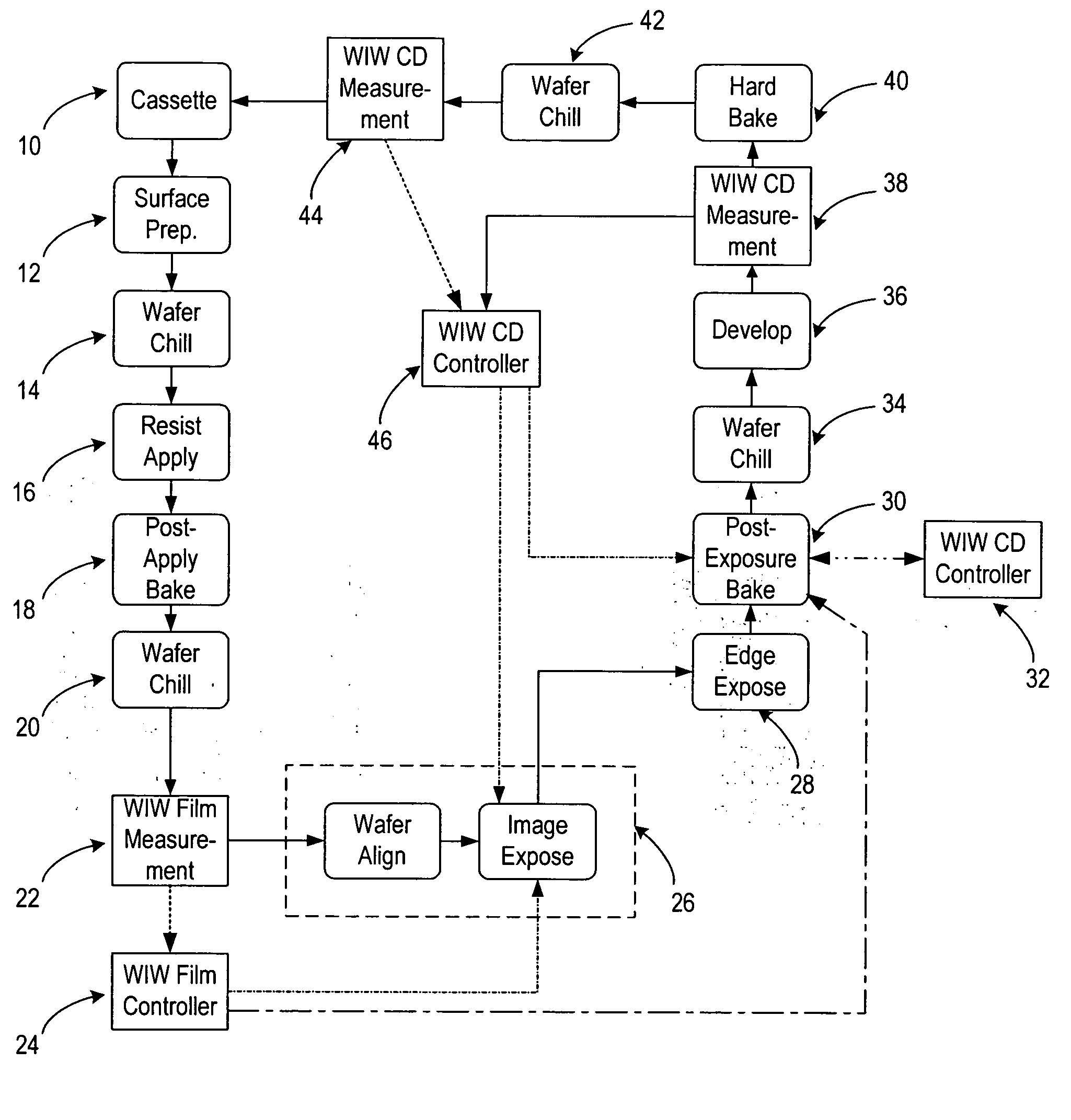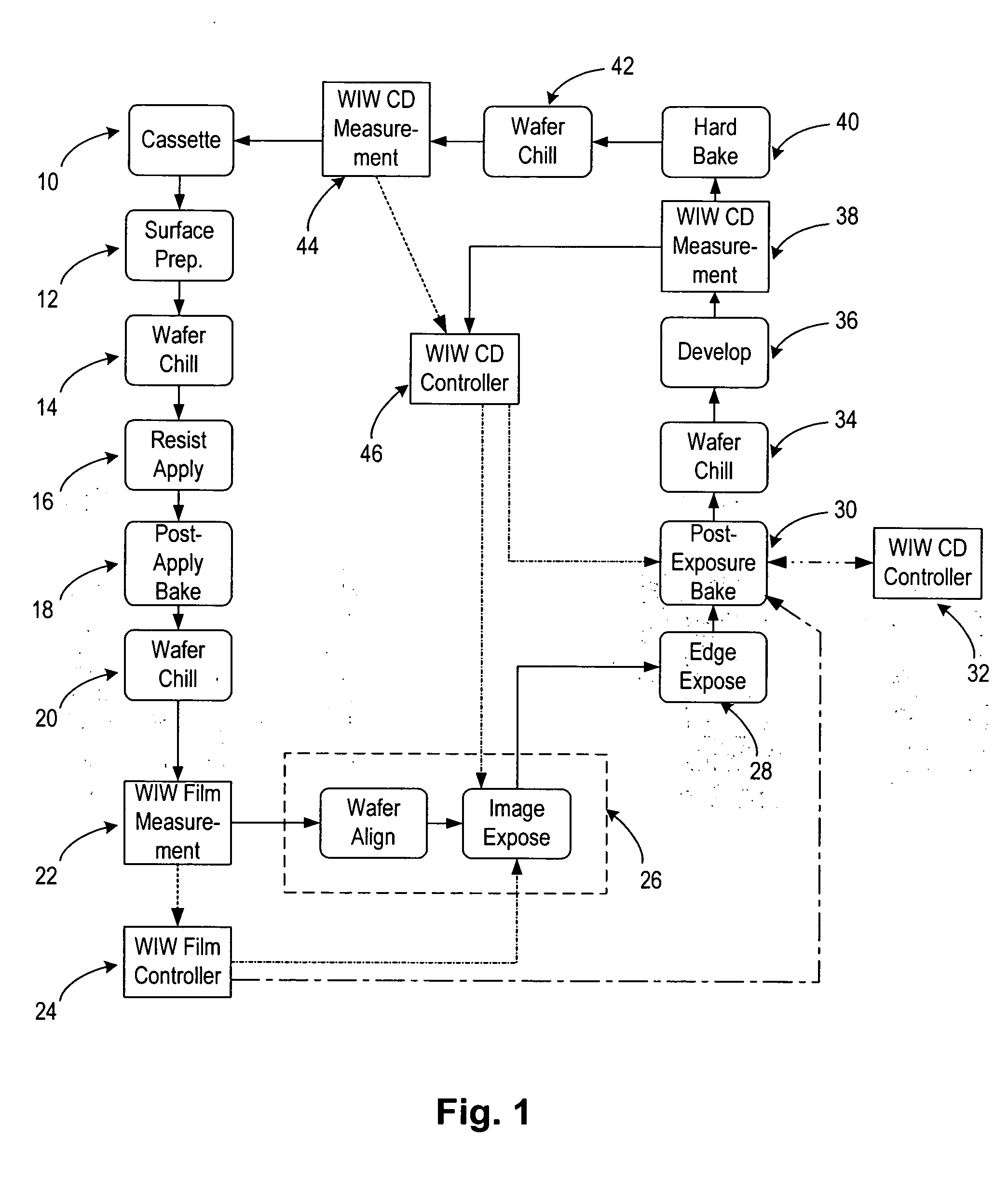Methods and systems for lithography process control
a technology of lithography process and process control, applied in semiconductor/solid-state device testing/measurement, counting objects on conveyors, instruments, etc., can solve the problems of low feature size which may be successfully fabricated, performance characteristics such as resolution capability of lithography process may often be limited, and variations in the dimensions of features at various times, so as to improve not only yield, but also high margin product yield
- Summary
- Abstract
- Description
- Claims
- Application Information
AI Technical Summary
Benefits of technology
Problems solved by technology
Method used
Image
Examples
Embodiment Construction
[0022] Turning now to the drawings, FIG. 1 illustrates an embodiment of a method to evaluate and control performance characteristics of a lithography process. For example, the method may be used to reduce, and even to minimize, within wafer (“WIW”) variability of critical metrics of the lithography process. Critical metrics of a lithography process may include, but are not limited to, critical dimensions of features formed by the lithography process and overlay. Critical dimensions of features formed during the lithography process may include, for example, a width, a height, and a sidewall profile of the features. A sidewall profile of a feature may be described, for example, by a sidewall angle of the feature with respect to an upper surface of a wafer, a roughness of the sidewall of the feature, and other physical characteristics of the feature. Overlay generally refers to a lateral position of a feature on one level of a wafer with respect to a lateral position of a feature on an...
PUM
| Property | Measurement | Unit |
|---|---|---|
| temperature | aaaaa | aaaaa |
| temperature | aaaaa | aaaaa |
| temperature | aaaaa | aaaaa |
Abstract
Description
Claims
Application Information
 Login to View More
Login to View More - R&D
- Intellectual Property
- Life Sciences
- Materials
- Tech Scout
- Unparalleled Data Quality
- Higher Quality Content
- 60% Fewer Hallucinations
Browse by: Latest US Patents, China's latest patents, Technical Efficacy Thesaurus, Application Domain, Technology Topic, Popular Technical Reports.
© 2025 PatSnap. All rights reserved.Legal|Privacy policy|Modern Slavery Act Transparency Statement|Sitemap|About US| Contact US: help@patsnap.com



